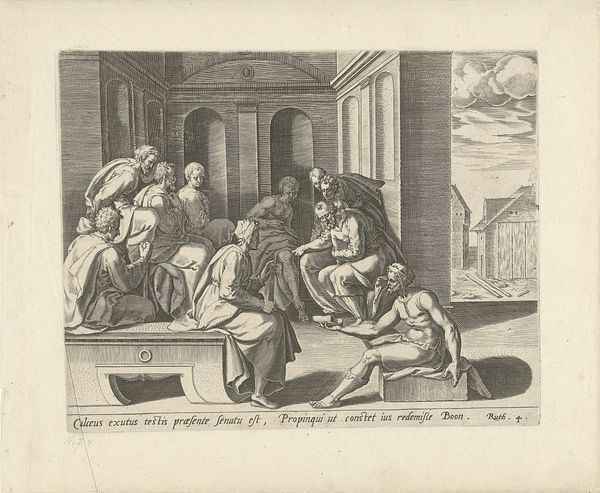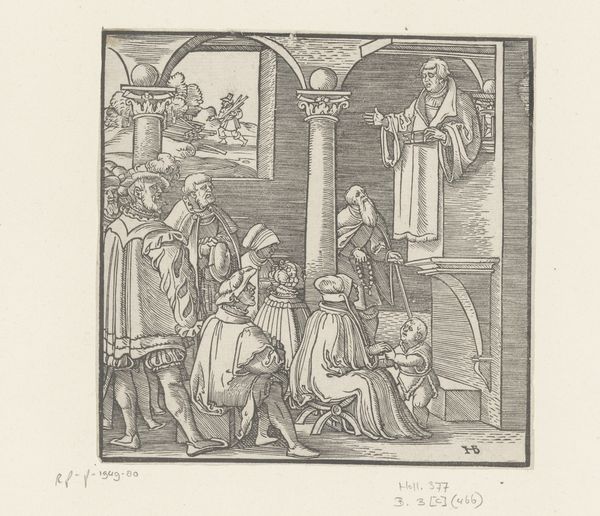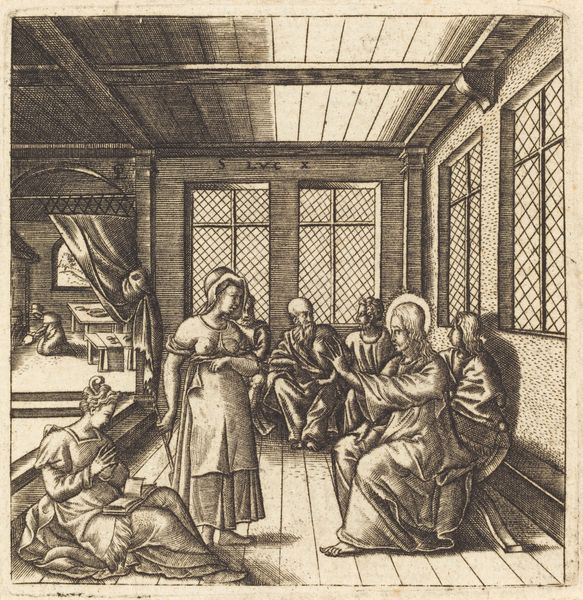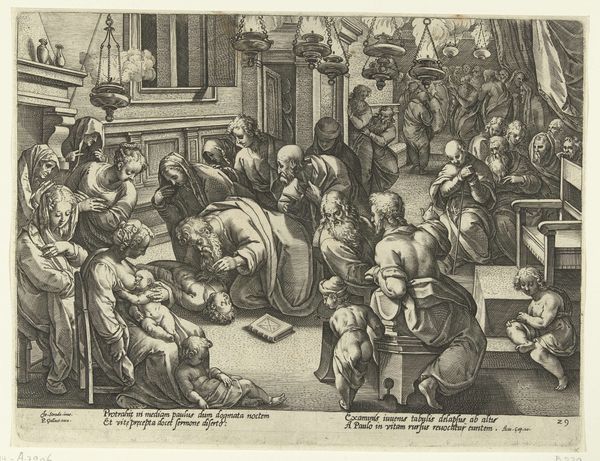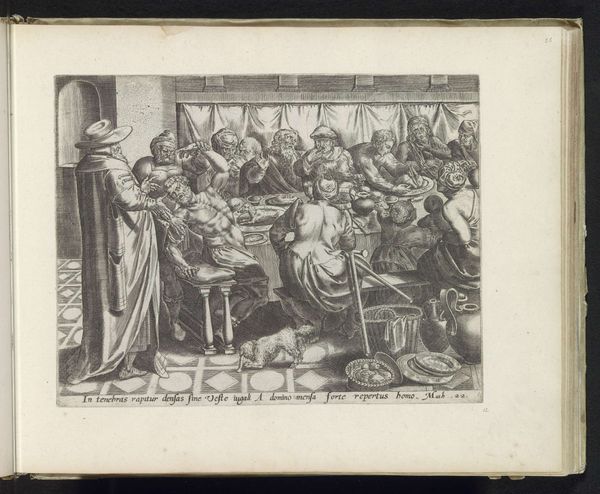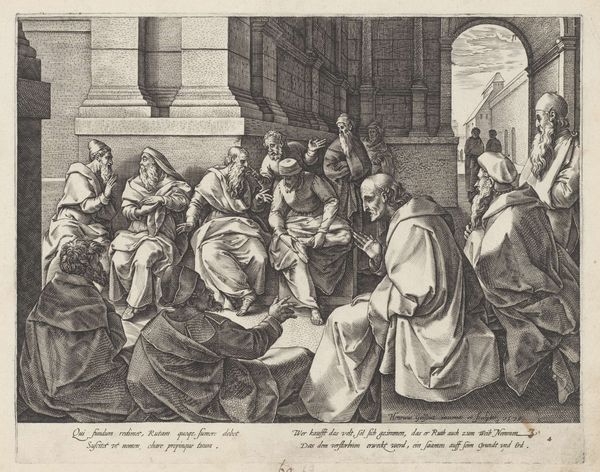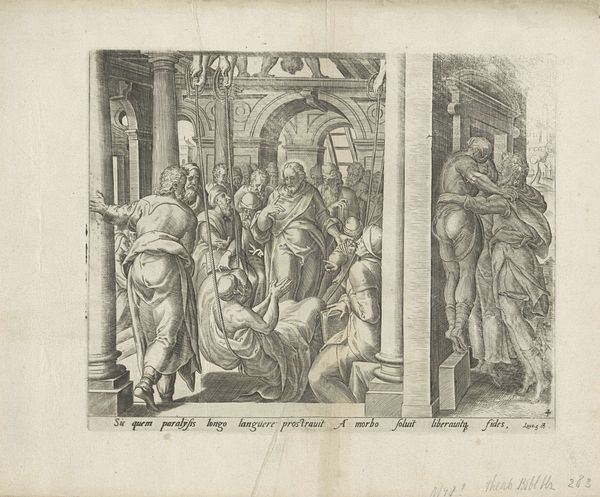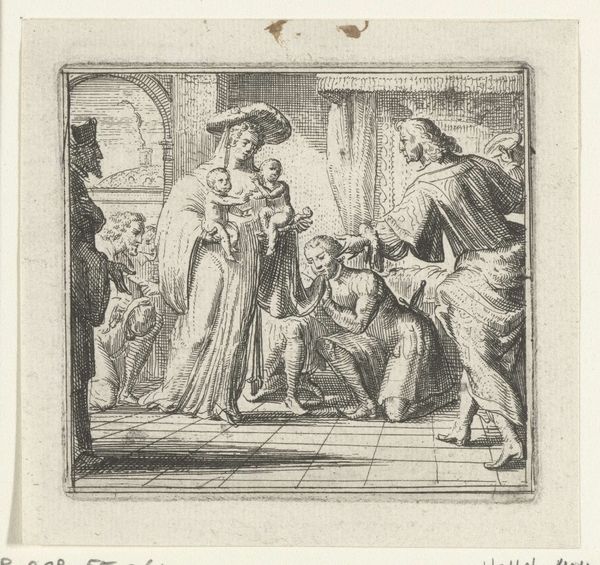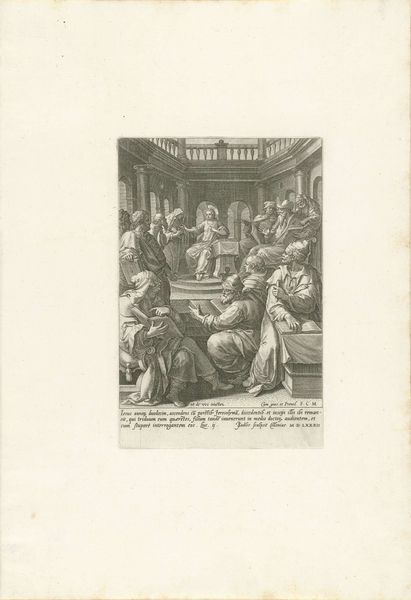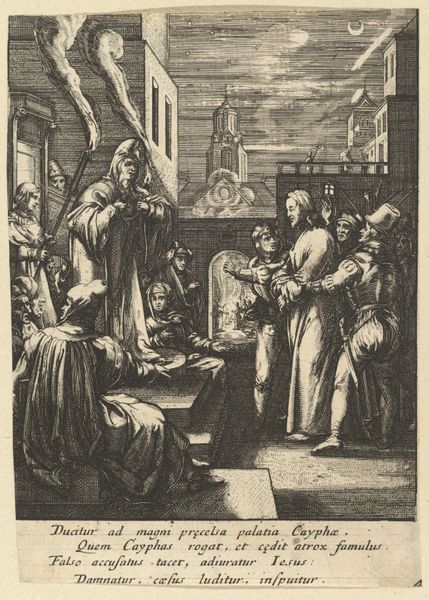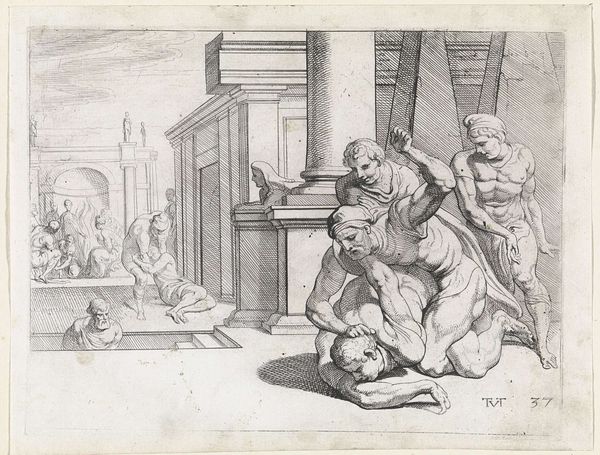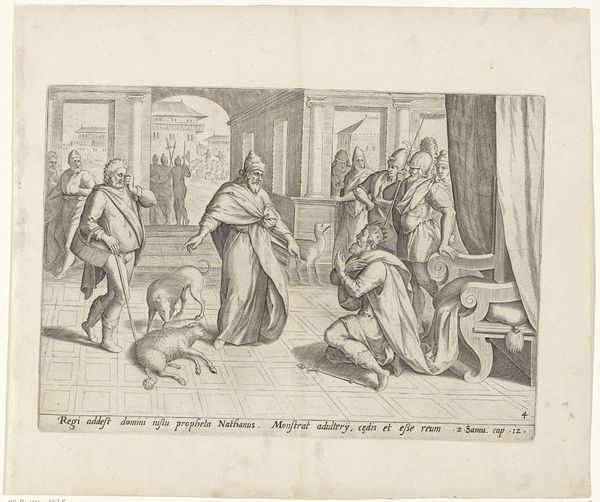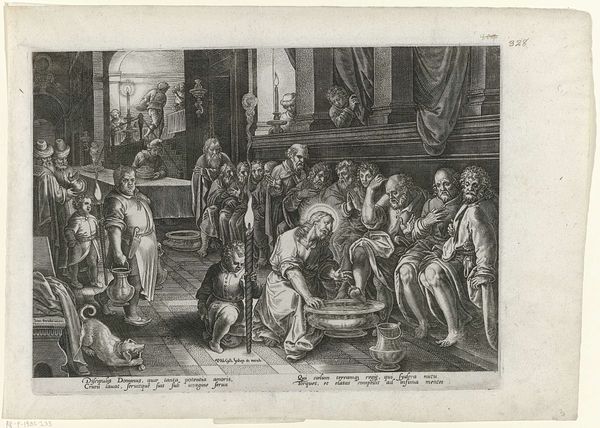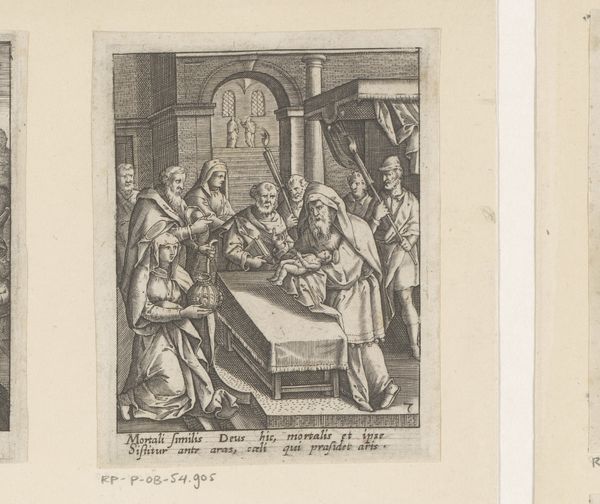
print, engraving
#
baroque
# print
#
old engraving style
#
genre-painting
#
history-painting
#
engraving
Dimensions: height 74 mm, width 80 mm
Copyright: Rijks Museum: Open Domain
Curator: This is a 1697 engraving by Romeyn de Hooghe, titled "Illustration for Boccaccio's Decameron," currently held here at the Rijksmuseum. Editor: My immediate impression is of contained intensity. The print work is so meticulous, and yet it depicts what seems to be a gathering of nuns. Curator: Indeed. De Hooghe, a prominent figure in the Dutch Baroque, was often commissioned to illustrate literary works. This particular image visualizes one of the tales from Boccaccio’s Decameron, a collection of novellas famous for its satirical and often bawdy content. Given the clothing of the figures it's clearly related to an Italian Renaissance context. Editor: I find the arrangement fascinating. A clear division separates those on the upper platform from the scene below. The pointing gestures, combined with the kneeling figure, carry a weight of judgment or revelation. Considering the Decameron, this might even illustrate themes of morality and deception within a cloistered community. Curator: Absolutely. It’s important to remember the cultural milieu in which this print was made. The late 17th century witnessed increased scrutiny of religious institutions, with society keen to expose potential hypocrisy within religious orders. Editor: Yes, the dark and meticulous shading definitely hints at the possibility of scandal or dark secrets beneath the surface of these solemn looking women, which are common iconographies. Curator: I see this work more as a reflection of Dutch societal views on the narratives within the Decameron, rather than necessarily a critique of religious institutions within Dutch society itself. It allowed a visualization of the foreign to further the idea of an existing status-quo. Editor: Perhaps, or perhaps the imagery of secluded spaces allows us, the audience, to project fears and concerns regarding morality and secret conduct within insular settings, a common theme that we recognize cross-culturally and psychologically in symbols of enclosure. Either way it speaks to enduring human fascination with hidden lives. Curator: I agree. Whether for explicit political reasons, social critique or deeper social-psychological reasons, De Hooghe’s engraving gives tangible form to the literary landscape. Editor: And I think it really makes you see this piece through new and surprising ways when you place it in its cultural, historical, and symbolic context.
Comments
No comments
Be the first to comment and join the conversation on the ultimate creative platform.
